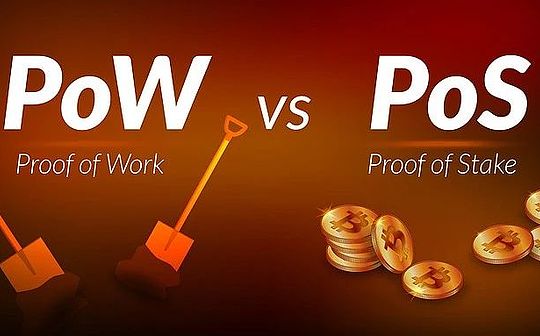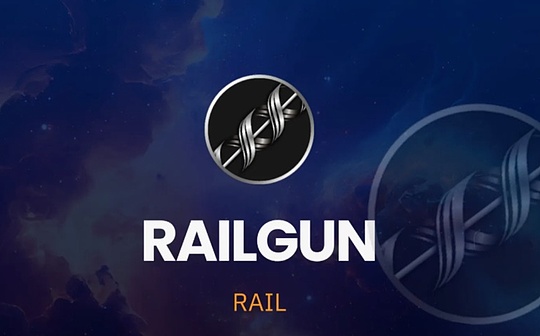
This article is translated from a report by BitMEX Research, with the original link: https://blog.bitmex.com/pow-vs-pos-economic-cost-to-attack/
summary: This article compares the economic costs of attacking PoW (Proof of Work) networks and attacking PoS (Proof of Stake) networks.We analyzed the costs of renting and purchasing computing power/pled equity, respectively.We corrected the common misconception that the attack cost of PoS networks is bound to be higher due to the need to purchase tokens.We concluded thatIn theory, the cost difference between attacks on these two types of networks is smaller than many people think.
Overview
This article aims to analyze the most economical methods for comparing attack PoW systems and PoS systems, especially making the most appropriate one-to-one comparison of attack costs.We write this because others have done some comparisons and usually conclude that PoS systems are harder to attack, but we think these comparisons are not based on fair one-to-one comparisons.In this article, we focus on distinguishing the two ways of renting and purchasing computing power/pled equity.We believe that when comparing the economic costs of an attack, we need to determine whether to consider renting or buying, and then try a one-to-one comparison.
Thought experiment
Let’s do a thought experiment first.While this may not be realistic, assume that Kamala Harris appoints Elizabeth Warren as vice presidential candidate and Kamala Harris won by a landslide in the 2024 U.S. presidential election.This is undoubtedly a nightmare for the cryptocurrency ecosystem.In addition to the regular duties as Vice President, we assume that Elizabeth Warren is also responsible for cryptocurrency affairs.So she formed an anti-cryptocurrency force with a multibillion-dollar budget to try to shut down the cryptocurrency network.
This thought experiment is very meaningful becauseThe original intention of the cryptocurrency network is to be as difficult as possible to shut down.So, let’s think about how Elizabeth Warren will carry out these expensive and potentially futile attacks, and how much will they cost?Next we will compare the cost of attacking Bitcoin and attacking Ethereum.
Full nodes and consensus rules
Many people believe that compared with Ethereum,One of the core advantages of Bitcoin is that it has a large number of full nodes.Although these nodes are not related to block production, they play a key role in enforcing consensus rules.Importantly, these nodes have very low operating costs.Many Bitcoin users run these nodes, connect them to their wallets, and form a culture where these clients are not upgraded because of changes in consensus rules unless the entire community reaches an overwhelming consensus.This does not exist in Ethereum.
In this article, we will try to temporarily ignore this obvious advantage of Bitcoin and focus on the theoretical cost of attacking PoW and PoS networks.In theory, Ethereum could also cultivate a culture and network that enforces consensus rules similar to Bitcoin.PoS itself does not hinder this, but running a fully verified Ethereum full node is more expensive because it requires verification of signatures related to the staking process.To some extent, ignore this weakness, this is steely Ethereum.
Another issue that needs to be addressed is that in response to some of the basic attacks we will outline below, many in the Ethereum community said that the community will confiscate the attacker’s pledge interests through consensus rule changes.For this article, we will assume that neither Bitcoin nor Ethereum can do this effectively.Another consideration is that attackers may successfully force coordination and centralization, which some people may want to avoid.Perhaps we are thinking about the future, by which time both agreements have become rigid and cannot coordinate changes in the rules of the agreement without causing a major division.
Attack cost
Assuming Bitcoin price is $60,000 and the block reward is 3.125 BTC, considering moderate transaction fees, this means that Bitcoin miners earn about $10 billion annually.We believe that this is a key security indicator and the most important single security indicator.Bitcoin miners spend nearly $10 billion a year, and if you want to attack Bitcoin, you may need to match it.But what does matching it means?In this article, we will analyze between lease and purchase.
lease
The cheapest way to attack a PoW network is to rent computing power.In theory, if miners earn $10 billion in annual income, then as long as you give them an annual income of just over $10 billion, economically rational miners will be willing to rent out their computing power to you.Such assumptions may be unrealistic, so let’s assume you need to pay a 20% premium to attract miners, which is $12 billion a year.Of course, you don’t actually need to spend $12 billion a year because you can earn $10 billion a year after you rent the computing power.Therefore, it can be said that the net cost of renting the entire Bitcoin computing power is only $2 billion per year.
Now, if you are Elizabeth Warren, of course you only need 51% of your computing power to launch an attack, filling the chain with empty blocks.On the other hand, when such an attack is successfully carried out, we can assume that the price of Bitcoin will drop sharply.Therefore, the net cost of such an attack could be $6 billion per year, which is half of the computing power rented at a 20% premium.
The same logic applies to pledge rights.If the total pledge interest in Ethereum will bring in $3 billion in annual revenue, then economically rational pledgers should be willing to give up direct pledge in exchange for $3 billion in annual revenue.Likewise, like PoW, we need to assume that there is a 20% premium, or $3.6 billion per year.This means the net cost of renting all pledge interests is $600 million per year.Or, if you want an attack, maybe only one-third of the pledge interest is needed, so it takes only $1.2 billion per year to get the PoS network to stop completely.
Therefore, we believe that a key comparable metric when considering the economic cost of an attack is $5 billion per year for Bitcoin to $1.2 billion per year for Ethereum.If the market value is normalized, the attack cost is roughly the same, and Bitcoin is about three times that of Ethereum.This is certainly not a perfect comparison, but in our opinion, it is already the best comparison when trying to make similar comparisons.Of course, there are many changes in this, including the sustainability of Bitcoin mining revenue, which is in contrast to Ethereum’s permanent issuance.However, this is not necessarily an inherent feature of PoW and PoS. In theory, PoW coins can also be issued permanently, or PoS coins can also try to obtain pledge income completely from transaction fees.
As for the feasibility of this kind of attack on leasing computing power/staking rights, Bitcoin players and Ethereum players don’t have to worry too much about Elizabeth Warren.This kind of attack is somewhat impractical.In fact, if the attack begins, the asset owner can reclaim their computing power or pledge interests.Asset owners may worry that if the network is attacked, their asset value may drop.Of course, Ethereum and pledge interests seem to have more advantages at this point.The pledged ETH is worth $100 billion, exceeding the value of Bitcoin mining assets.However, while this $100 billion figure is important, it seems to us that it is not a key indicator for comparison with Bitcoin, and annual revenue is more critical.On the other hand, the market value of Bitcoin miners, currently ranked high and listed, is about $28 billion.These miners control about a third of Bitcoin’s computing power, so they are actually very close to the $100 billion staking ETH.On the other hand, these already listed Bitcoin miners may be overrated for their “turning to AI” narrative.Also remember that Bitcoin’s market value is more than three times that of Ethereum.Therefore, even if these listed miners are included in the calculation, Ethereum still wins at least three times on this asset value indicator, as a percentage.Ethereum stakeholders do have more stakes, which is important, perhaps the second most important indicator behind annual revenue.
A small problem with the above analysis is that non-custodial computing power leasing is relatively simple.Miners can provide some form of hardware control to the lessee on the Internet (with restrictions) and then cancel the lessee’s access when an attack occurs.Renting your pledge interests in a completely non-custodial manner is not necessarily feasible, which may be an advantage because it will make pledgers less willing to rent out their pledge interests because of the greater risk.On the other hand, this is not an advantage for PoS systems. If the way miners rent out computing power is easily revoked, then there is no need to worry about the risk of continuous attacks.Of course, non-custodial staking services also have great benefits. People want to build such services (Ethereum competitors claim they have been established) to make the staking system generally more flexible, but we think,There must always be a large number of risks, because the risk of fines and confiscation must be large enough for pledge to make sense.
Purchase and build
The next type of attack involves actual purchases and construction, including purchasing mining hardware, facilities and electricity, or purchasing pledge interests.We first consider purchasing pledge rights.
If Elizabeth Warren’s anti-cryptocurrency unit wants to attack Ethereum, she can try to buy one-third of the ETH staking interests and then shut down the network.Currently, one-third of the ETH pledge interests are worth $33 billion.Of course, if someone tries to buy so much ETH, especially the U.S. government, the price will skyrocket, so the cost of buying will be far more than $33 billion.So it would be a very expensive attack, which, in our opinion, could cost as much as $100 billion.If the attack succeeds, Ethereum may certainly fail, but some Ethereum users will become rich in the process.The impact of this attack on the ecosystem will be huge, and the token price of Ethereum competitors will rebound sharply.Now that Ethereum is destroyed, speculators will try to determine which currency will replace Ethereum.What’s more interesting is that speculators will try to predict which PoS coins Elizabeth Warren will invest in next.therefore,This attack would backfire and might not achieve Elizabeth Warren’s purpose.
The next thing to consider is that the opponent tries to buy computing power in PoW coins and reach 51% to produce empty blocks.To reach 51%, the cost can be very expensive and it takes quite a while, and it can take years.This will involve purchasing mining hardware, purchasing mining facilities, purchasing electricity, and hiring personnel to operate these facilities and maintain mining hardware.It is important to remember that new technologies are constantly evolving, new facilities are being launched, new ASICs are being manufactured, and new mining chips are being developed.To get opponents to 51%, it may also be necessary to participate in and fund chip development and ASIC manufacturing.Many of the above processes are extremely risky and the execution risk is quite high.Governments may be far less effective and efficient in managing these risks and implementation than the private sector.Therefore, governments may need to spend a lot more than the private sector to be sure to reach 51%.Due to the complexity and risks involved, governments may have to spend at least twice as much as the private sector, or more.In our opinion, this could result in a cost of nearly $100 billion in a few years, which is about or slightly lower than the cost of buying a third pledge equity in Ethereum, but the execution risk may be much greater than buying a pledge equity.This is extremely expensive.Again, doing so would backfire, as it would result in a lot of energy waste that might not necessarily be consistent with Elizabeth Warren’s superficial goal.Of course, one advantage of government is that if the private sector discovers a government plan, the private sector may reduce spending due to a lower expected return on investment, making the attack cheaper.
Here,A key factor in PoW systems is that attackers may need to spend a long period of time ongoing funds to maintain and maintain attacks, which is primarily a one-time cost for PoS systems.Bitcoin extremists can patiently wait for any attack to end.The attacker may eventually lose control of computing power and the network may recover.On the other hand, in PoS systems, once an attacker has one-third of the pledge interest, they may be able to kill the chain forever.Of course, there may also be a hard fork to confiscate the attacker’s funds, just as a PoW system can hard fork to change the hash algorithm.But assuming there is no change in consensus rules, the advantage of the PoW system is that the attacker must continue to pay the price to maintain the attack, perhaps indefinitely.This is somewhat related to a key weakness of PoS systems that PoW proponents consider, i.e.Lack of anchoring to the real world.
Confiscation risk
A more feasible attack method that Elizabeth Warren can take is to try to confiscate one-third of the pledge rights or half of the computing power by force or legal means.This approach is beyond the scope of this article, and the focus of this article is to explore the economic costs of more typical forms of attack.However, what is easier to confiscate is worth considering.In terms of risk, it is easy to imagine how difficult it is to confiscate the pledge rights from small self-hosted pledgeers using their own physical hardware.Transferring pledge interests is as simple as transferring private keys, and it is easy to transfer across borders without being discovered.This is in sharp contrast to mining hardware, which can be found and seized during transportation.On the other hand, if the staking is done through a regulated custody service, it seems easier than confiscating mining assets.Therefore, it is not difficult to understand.Fundamentally, the security of mining depends on whether mining assets are distributed in multiple jurisdictions and whether the mining farm is as small as possible.Similarly, the security of staking depends on whether the user uses his own hardware to staking independently.
Of course, if Elizabeth Warren really confiscated most of the computing power, these mining assets could degrade and deteriorate over time, while others could build infrastructure so that the network could one day recover.In contrast, if the opponent gains a 33% pledge interest, the PoS chain may be ruined forever.In a PoW system, you have at least a chance to wait for the attack to end, get rid of past burdens, and restore the network.
in conclusion
It is generally believed that if the attack costs of PoW and PoS networks are basically calculated, the attack costs of PoS networks are much higher.In fact, when making incomplete similar comparisons of costs, the difference between the two is smaller than many people expect, and the attack cost of pledge equity systems is only slightly higher.Overall, our logic is based on the assumption that to organize a PoS network, you need one-third of the pledge entries, not 50% of the PoW network; establishing and maintaining computing power has more execution risks than establishing a pledge entries..Taken together, these factors reduce the higher cost of buying large amounts of tokens in the market.
Regardless of how people view the resistance of PoS or PoW systems to classic economic attacks, in order for these networks to survive under well-resourced national attacks,The distribution of mining assets and pledge agents is key.Unfortunately,Both Ethereum and Bitcoin still have room for improvement in this regard.In the long run, resistance to censorship may depend on the economic incentives of the staking service providers and the distribution of cheap, reliable energy worldwide.








